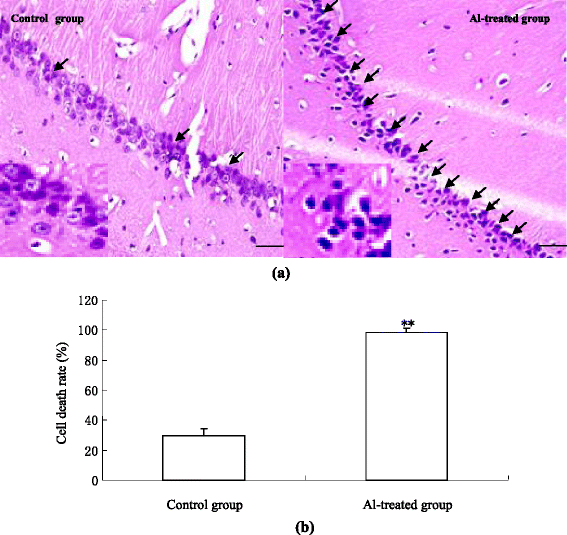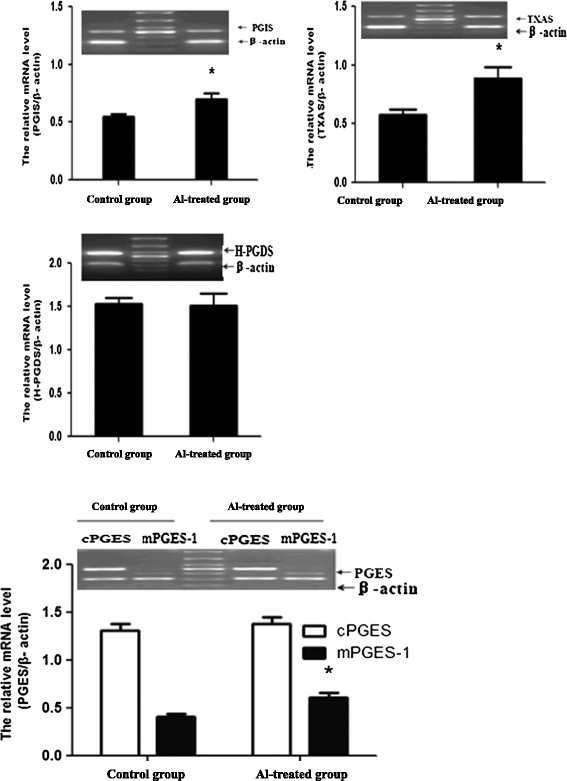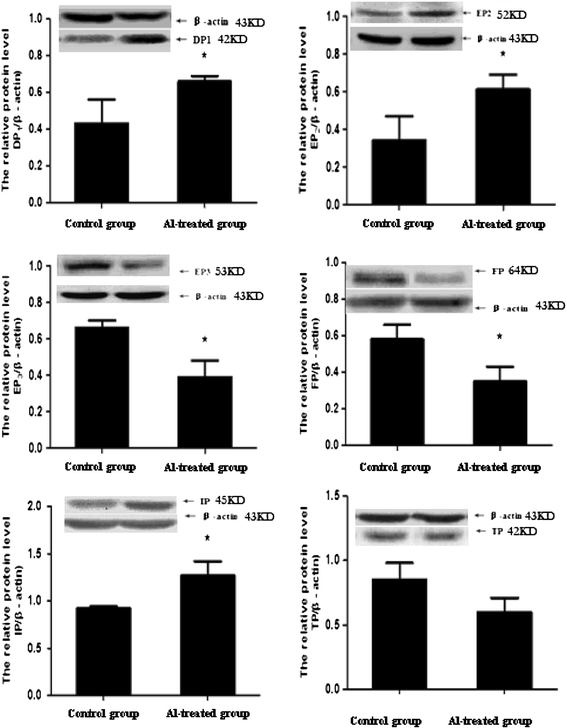Hippocampal neuronal cyclooxygenase-2 downstream signaling imbalance in a rat model of chronic aluminium gluconate administration
- PMID: 25888969
- PMCID: PMC4336726
- DOI: 10.1186/s12993-015-0054-z
Hippocampal neuronal cyclooxygenase-2 downstream signaling imbalance in a rat model of chronic aluminium gluconate administration
Abstract
Background: Acute and chronic brain damages including neurodegenerative diseases are a group of neuroinflammation-associated diseases characterized by cognitive function defect and progressive neuron loss. The pathophysiological procession of brain damages involves the overexpression of cyclooxygenase (COX)-2. Owing to the limited benefit to chronic brain damage and the late adverse effect of COX-2 inhibitors, the COX downstream signaling pathway has become a focus in neurological research. In order to explore the mechanism of aluminum neurotoxicity and the importance of COX2 downstream signaling pathways to chronic brain damage, the present study was designed to simultaneously observe the prostaglandin (PG) contents, and the expressions of PG synthases and PG receptors of hippocampus in a rat model induced by chronic administration of aluminium gluconate.
Methods: A rat model of chronic brain damage was established by chronic intragastric administration of aluminium gluconate (Al3+ 200 mg/kg per day, 5d a week for 20 weeks). PG contents, the expressions of PG synthases, and the expressions of PG receptors in rats were measured by ELISA, RT-PCR and Western blotting, respectively.
Results: Chronic aluminium gluconate administration resulted in hippocampal neuron injury and learning and memory disorders in rats. Aluminium gluconate administration also resulted in increased levels of PGE2, PGD2, TXA2, PGI2, and PGF2α in rat hippocampus. The DP1, EP2, IP, mPGES-1, EP4, PGIS and TXAS mRNA expressions, and the DP1, EP2 and IP protein expressions significantly increased in the Al-treated hippocampus, while the EP3 and FP mRNA and protein expressions and the TP mRNA expression decreased.
Conclusions: The PGS/PGs/PG receptors signaling pathway in chronic aluminium gluconate-overloaded rat hippocampus is disturbed, which may be involved in the mechanism of aluminium neurotoxicity.
Figures




References
-
- Frisardi V, Solfrizzi V, Capurso C, Kehoe PG, Imbimbo BP, Santamato A, et al. Aluminium in the diet and alzheimer’s disease: from current epidemiology to possible disease-modifying treatment. J Alzheimer’s Dis. 2010;20:17–30. - PubMed
-
- Campbell A. The role of aluminium and copper on neuroinflammation and Alzheimer's disease. J Alzheimers Dis. 2006;10(2–3):165–72. - PubMed
Publication types
MeSH terms
Substances
LinkOut - more resources
Full Text Sources
Other Literature Sources
Research Materials

